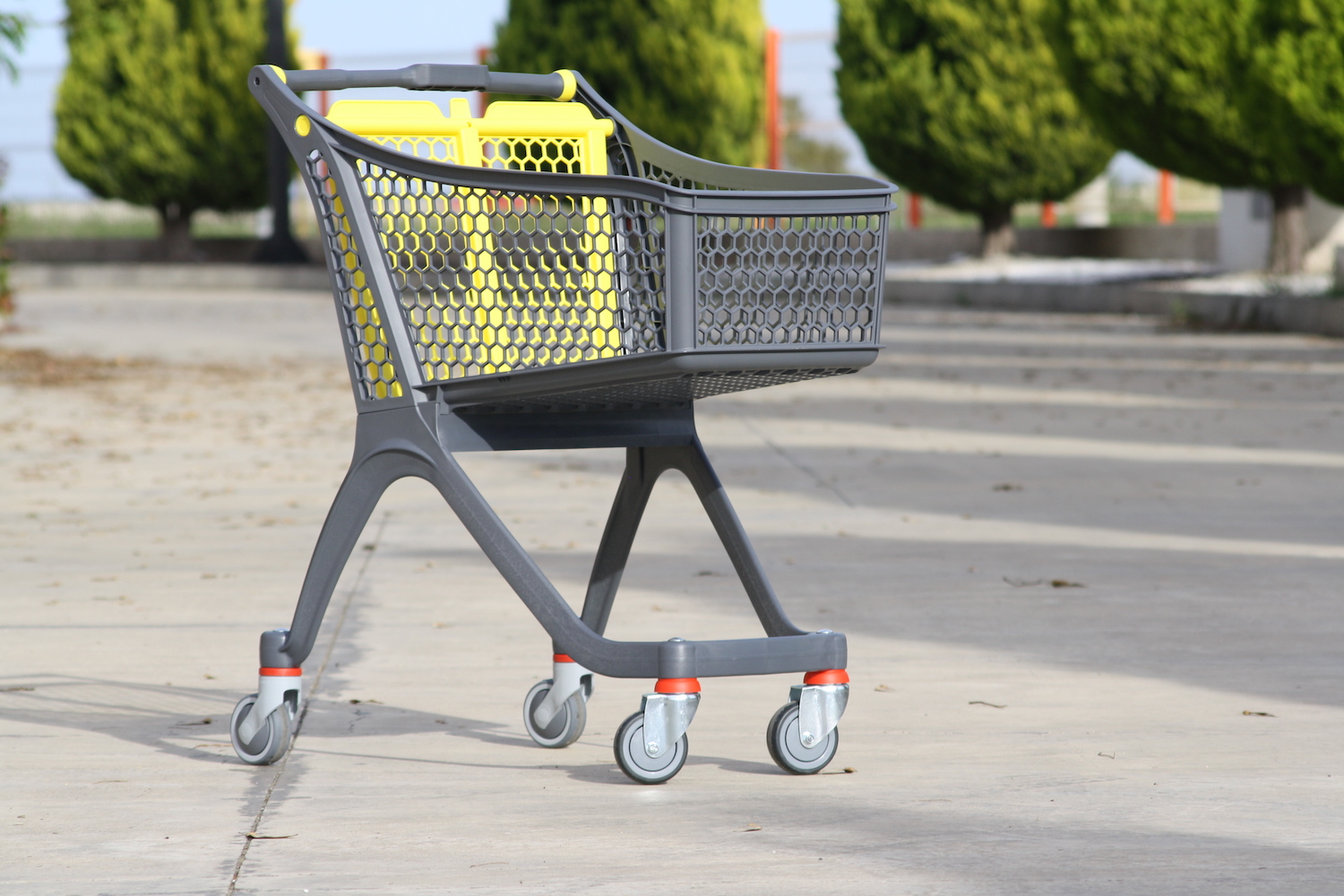We spend millions subsidizing grocery stores in areas without them. But emerging research suggests that proximity doesn’t matter as much as affordability in getting healthy food to people who need it.
Last month, the Fort Worth, Texas city council voted to ban development of new dollar stores within two miles of existing ones, and required that any new dollar-store facilities devote at least 15 percent of their floor space to fresh food. Around the same time one year prior, the city of Tulsa, Oklahoma made a similar move, blocking new dollar stores from operating within a mile of others in three neighborhoods where residents were primarily black and experiencing unemployment at over twice the rate that white Tulsans were.
Since then, numerous localities, from New Orleans, Louisiana to DeKalb County, Georgia have followed suit, passing ordinance after ordinance aimed at resolving the same, seemingly intractable issue: a dearth of grocery stores that sell fresh food.
According to elected officials and proponents of such bans, traditional supermarkets struggle to compete with dollar stores because the business model of the latter faces significantly lower labor and operating costs. And that’s at least in part because not all of them sell fresh food. When conventional grocery stores fold as a result, the logic has gone, communities are left with fewer nearby options from which to buy fresh items like produce and meat.
Emerging research has found that the extent to which a supermarket’s location shapes our food choices may be significantly overstated, and that subsidizing their expansion does remarkably little to change what people eat.
The resulting phenomenon been referred to since at least the 1990s as a “food desert,” a term reportedly coined by a U.K. government task force concerned with nutrition inequality. The official U.S. Department of Agriculture (USDA) definition of the term includes any census tract with a 20 percent or greater poverty rate and where a third or more of the residents live more than one mile away from a supermarket.
Over the past decade, state and municipal-level governments have spent hundreds of millions of dollars on incentives to encourage grocery store development in these areas, on the premise that their absence is the primary cause of diet-related health issues like obesity and chronic disease. But what if that assumption isn’t really accurate and is instead a classic case of correlation mistaken for causation? Emerging research has found that the extent to which a supermarket’s location shapes our food choices may be significantly overstated, and that subsidizing their expansion does remarkably little to change what people eat.
In a study published in the November issue of the Quarterly Journal of Economics, economists from six universities analyzed grocery purchases made between 2004 and 2016 by 100,000 households across the country. They were looking for changes in what people bought and presumably ate after new stores moved into a neighborhood. Detailed purchase information came from market analytics firm Nielsen, which runs a program asking a nationally representative group of participants to scan and log every barcode of every product they buy.
What researchers found was that the biggest beneficiary of new supermarkets were supermarkets themselves, which enjoyed an increased share of consumer spending.
Researchers then assigned each product a score based on USDA’s Healthy Eating Index. They also made use of data detailing 6,700 supermarket openings—which included wholesale clubs, large discount stores that sell groceries, and grocery stores, but excluded convenience stores—within that time period.
What they found was that the biggest beneficiary of new supermarkets were supermarkets themselves, which enjoyed an increased share of consumer spending.
The overall nutritional quality of a household’s grocery purchases, however, was not heavily impacted by a new store’s presence in the area. Nor was the proportion of a household’s budget spent on groceries. This was the case across the entire study and—most importantly—among “food deserts,” which the study defined as zip codes lacking a supermarket.
“Total expenditure shares across grocery stores, supercenters, and club stores [increased] by only a fraction of a percentage point in the full sample, with no statistically detectable effect in the food desert subsample,” the study reads. “Thus, the primary effect of supermarket entry is to divert sales from other supermarkets.”
“The idea that supermarkets enter into food deserts and all of a sudden provide access to healthy food is a little bit of a misconception.”
These findings are especially notable because they challenge the long-standing rationale behind a multi-million dollar federal initiative that provides grants and loans to grocery stores in USDA-defined “food deserts.” Founded by President Obama in 2010, the Healthy Food Financing Initiative (HFFI) has committed $300 million to such incentives. At the local level, cities and states including New York City and Pennsylvania have similar programs in place, all driven by the idea that proximity to supermarkets has a direct correlation to people’s overall health.
“It seems like such an intuitive, simple solution that people just sort of accepted it,” says Jean-Pierre Dubé, a professor of marketing at the University of Chicago and one of six researchers involved in the study.
“Positioning ‘food deserts’ as a market failure makes it easier to justify raising public funds to finance stores and other subsidies to try and cure the problem,” Dubé adds. But without testing whether a supermarket’s location really impacts what people eat, he argues, tax breaks and subsidies for them are a “really gross misallocation of public funds.”
The Reinvestment Fund, the national fund manager for HFFI, defended the program as one crucial element of larger efforts to democratize food access.
“Investments in grocery stores and the food system are a necessary piece of the puzzle but so too are investments from the public sector in SNAP, nutrition incentives, and other purchasing power supports that can make it easier for families to eat nutritious food,” said Molly Hartman, program director for Reinvestment Fund’s HFFI in an email.
“You have access to vegetables does not mean that you are going to change your purchasing patterns and diet.”
The Journal of Economics study builds on past research conducted at a smaller scale. In 2014, for example, researchers found no change in fruit and vegetable consumption among residents in two Philadelphia “food deserts” following the development of a new supermarket. In 2015, a study of two Bronx, New York neighborhoods found that the entry of a city-subsidized grocery store had minimal impact on food availability in homes or on what children ate.
These findings weren’t that surprising to researchers and advocates that I spoke with for this story. Tamara Dubowitz, a senior researcher at the nonprofit RAND Corporation, a think tank, noted that most families that she’s observed in her work chose to travel further distances by car in order to shop at big-box stores, where they can stretch their dollars the most.
“The deeper issue is really poverty.”
“The idea that supermarkets enter into food deserts and all of a sudden provide access to healthy food is a little bit of a misconception,” she says. “Yes, there are healthy foods, but the ratio of unhealthy to healthy foods is probably greater than the ratio of healthy to unhealthy foods. And just because you have access to vegetables does not mean that you are going to change your purchasing patterns and diet.”
Still, grocery stores, and particularly locally-owned businesses, can benefit communities in numerous other ways, like generating jobs, says Stacy Mitchell, co-director of the Institute for Local Self-Reliance, a nonprofit that has advocated for restrictions on dollar stores. (Dollar Tree, one of the country’s leading dollar-store chains, has been accused of violating federal labor laws, understaffing, and jeopardizing worker safety.) For Mitchell, the prevalence of dollar stores, supermarket closures, and general economic health in a given community are interlocking elements of a more systemic problem.
There are no easy villains in a systemic issue like food access.
“The deeper issue is really poverty,” Mitchell says. “Local grocery stores and other kinds of retail can help alleviate that, but they’re obviously only one part of the broader problem. While thinking about grocery store development, favoring the local grocer, and being very wary of a company like […] Dollar General as a solution to that problem makes a lot of sense, [it’s] not going to solve the whole thing. We need other kinds of economic development.”
In other words, there are no easy villains in a systemic issue like food access. While there is plenty of anti-dollar-store sentiment in that ongoing conversation, some researchers argue that dollar stores are often the only food option available to many communities that would otherwise have none. A 2016 study of food deserts in North Carolina, for instance, found that over half were served by SNAP-authorized dollar stores, most of which served a range of healthy foods, including canned vegetables, milk and cheese, dried fruits and nuts, beans, and frozen meat.
“If you see dollar stores in food desert areas, then they’re there to meet the food need that nobody else is providing,” says Elizabeth Racine, professor of public health sciences at the University of North Carolina-Charlotte. Rather than banning dollar stores outright, Racine urges elected officials to consult with constituents to understand what such retailers do for them.
What if the federal government focused on making healthy food less expensive instead of just making it more available?
As for government initiatives, the Journal of Economics study suggests that policymakers redirect their attention to eaters. In an analysis of household spending, the authors found that households in the top income quartile—that includes individuals who earned more than $1,462 a week per the Department of Labor’s most recent reporting—were nearly three times as willing to pay for a healthy basket of groceries than households in the bottom income quartile, individuals who earn less than $611 per week. That seems intuitive, doesn’t it? You’re more willing to pay a premium for nutrition if you have the money to spend on it in the first place.
But what if the federal government focused on making healthy food less expensive instead of just making it more available?
The report’s authors also looked at how increased incentives for food stamps users might encourage them to choose healthy food over unhealthy food more often than not. As it turns out, the federal government could save a lot of money by eating the cost of grocery bills instead of the cost of developing new stores. To go one step further and close the nutrition gap between top and bottom income quartile families completely, the feds would need to add incentives for healthy foods, at the cost of about 15 percent of SNAP’s current operating budget.
The study does point out its findings will demand further research. For its part, in 2014, USDA established a program to provide funding to nonprofits and local governments that incentivize SNAP beneficiaries to make fruit and vegetable purchases. That being said, the current administration has also proposed three SNAP rule changes that would kick more than 3 million people off food stamps.
Is it time to retire the idea that tax breaks for grocery stores will mean more of them in high-need areas? And what about the idea that the only thing standing between nutritional wellbeing and a life of chronic disease is just … bringing more food into more grocery stores so more people can buy it? Decades into our evolving understanding of “access,” it seems the conversation may need to shift to one about economic inequality.
Maybe the problem was never about where families could find healthy food. Maybe it was more about where that food was most affordable.
So is the term “food desert” still the best way to talk about who gets access to healthy food and where? Perhaps not. With the onset of grocery-delivery technology, that conversation may be changing anyway. While the country moves from brick-and-mortar grocery as the standard to a decentralized food landscape driven by the economics of online ordering, everything we think we know about access will shift.
Meanwhile, in Tulsa (which banned dollar stores in December 2018, remember?), one developer has submitted a proposal to construct a new grocery store this year—with the help of a $1.5 million federal grant.











